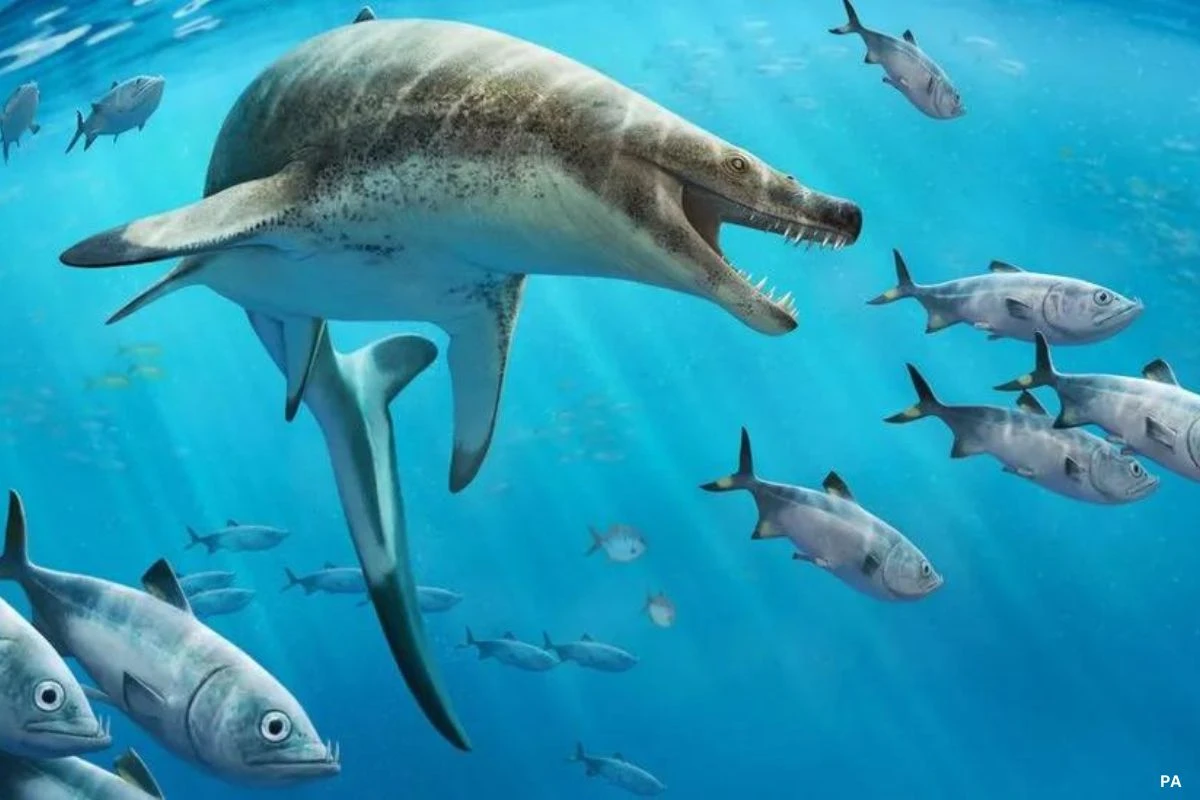In a discovery that seems straight out of a prehistoric nightmare, scientists have unearthed fossils belonging to a menacing sea lizard species named Khinjaria acuta. Measuring about 26 feet (8 meters) in length, this marine creature, with dagger-like teeth and a demonic appearance, prowled the oceans 66 million years ago, sharing its domain with dinosaurs like the Tyrannosaurus rex and Triceratops.
The fossil study, led by Dr. Nick Longrich from the University of Bath, focused on a skull and other skeletal remains found in a Moroccan mine. Describing the unearthed creature, Dr. Longrich mentioned, “It had a demon’s face and teeth like knives,” giving it a nightmarish aura. The lizard’s robust jaw and formidable teeth contributed to its terrifying appearance and bestowed upon it a powerful biting force.

The researchers, inspired by the creature’s dagger-like teeth, named it Khinjaria acuta, with “khinjar” being Arabic for “dagger” and “acuta” Latin for “sharp.” This sea lizard belongs to the mosasaur family, distant relatives of contemporary animals like Komodo dragons and anacondas.
Dr. Longrich emphasized the exceptional diversity of marine life during the Late Cretaceous period off the Moroccan coast, describing it as one of the most varied marine faunas in history. He noted that this diversity existed just before the mass extinction that claimed both mosasaurs and dinosaurs around 66 million years ago.
The extinction event paved the way for new marine life forms, including whales, seals, and fish like swordfish and tuna. However, the disappearance of apex predators like mosasaurs and dinosaurs has altered the modern marine ecosystem, resulting in fewer top predators.
“This incredible diversity of top predators in the Late Cretaceous is unusual, and we don’t see that in modern marine communities,” Dr. Longrich commented. The reasons behind this shift in ecosystem structure remain unclear, raising questions about the impact of marine reptiles, prey, or environmental changes during that period.
As the study sheds light on the ancient seas’ dangerous inhabitants, it adds a new chapter to our understanding of the diverse and sometimes nightmarish creatures that once ruled the oceans.













